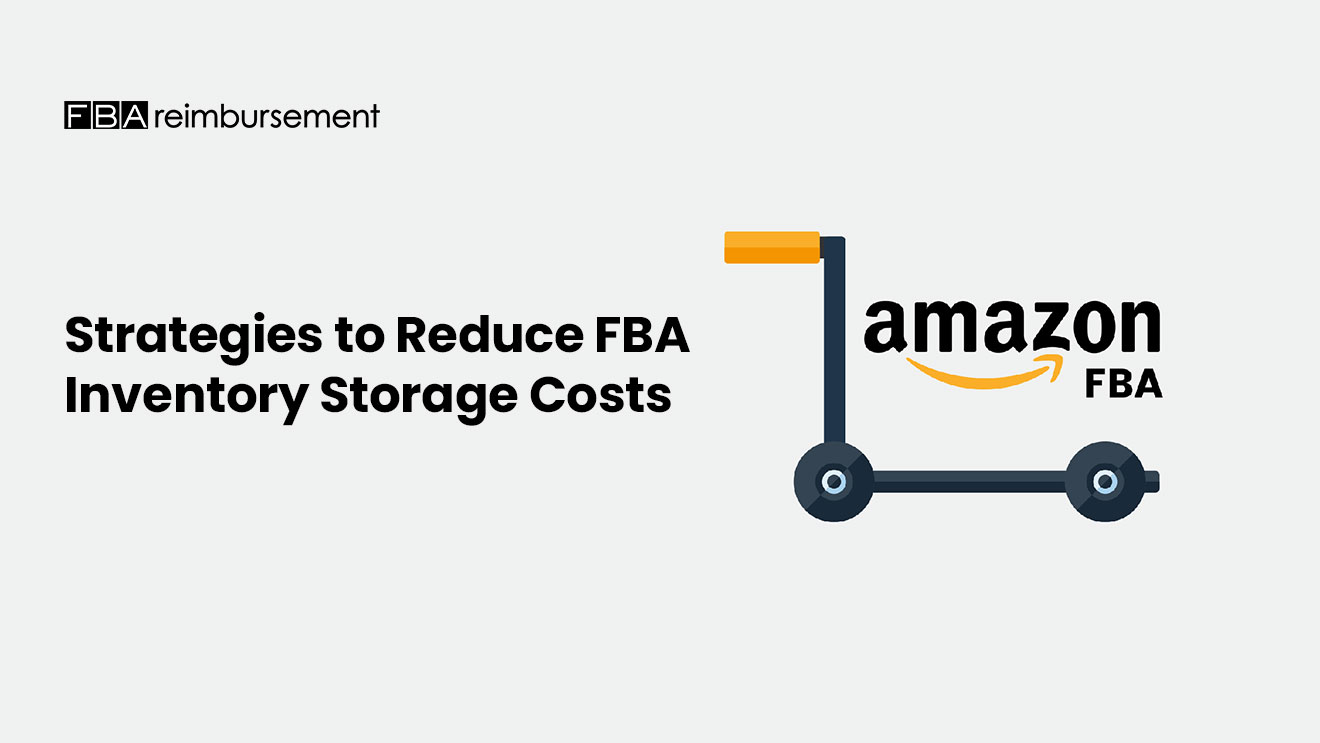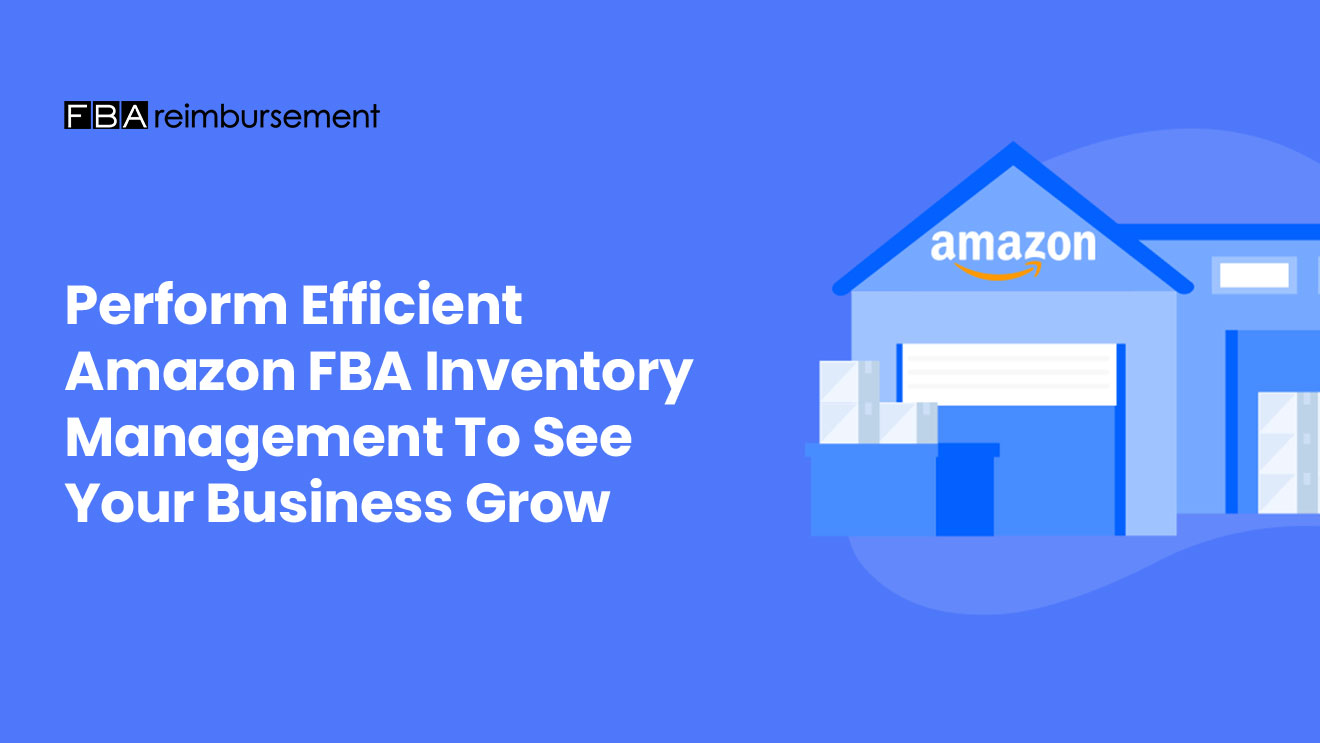Optimizing Amazon FBA Inventory Management for Cost Efficiency

Inventory management is the backbone of successful Fulfilment by Amazon (FBA) businesses. Efficiently handling inventory can significantly impact your bottom line, reducing unnecessary costs while maximizing sales opportunities.

FBA Inventory Management
Fulfilment by Amazon (FBA) has revolutionized the e-commerce landscape, offering sellers a streamlined way to reach customers globally. However, amidst this convenience lies a critical aspect that significantly impacts a seller’s success: inventory management.

Efficient inventory management within the FBA framework is more than just stocking products in Amazon’s warehouses. It’s a strategic approach that optimizes costs, ensures timely deliveries, minimizes storage fees, and maximizes sales potential. Here’s how sellers can ace FBA inventory management:
Forecasting Demand Accurately
Understanding market trends and predicting customer demand is foundational. Data analytics, sales history, and seasonal trends serve as pillars for forecasting. This insight allows sellers to stock adequate inventory without overcommitting capital or warehouse space.
Lean Inventory Principles
Embrace the philosophy of lean inventory. Just-in-time practices can minimize surplus stock, reducing storage costs and the risks associated with unsold products. This approach empowers sellers to respond swiftly to market changes without being burdened by excess inventory.
SKU Optimization
Regularly assess the performance of Stock Keeping Units (SKUs). Identify slow-moving or non-performing items to reallocate resources effectively. Pruning unnecessary SKUs frees up capital and storage, allowing sellers to focus on high-performing products.
Strategic Storage Options
Amazon provides various storage plans. Opt for options that align with your inventory turnover rates. Balancing between long-term storage and standard inventory storage ensures cost-efficiency while meeting demand fluctuations.
Effective Batch and Expiry Management
For products with expiration dates, manage batches meticulously to prevent inventory wastage. Timely removal or promotion of items nearing expiration helps avoid unnecessary losses.
Real-Time Monitoring Tools
Leverage Amazon’s inventory management tools and third-party software for real-time inventory tracking. This empowers sellers to make informed restocking decisions, preventing stockouts and maintaining customer satisfaction.
Returns Analysis for Continuous Improvement
Analyse return patterns to identify underlying issues. Addressing common reasons for returns such as inaccurate product descriptions or packaging concerns can significantly reduce return rates, cutting associated costs.
Smart Shipping Strategies
Consolidate shipments and utilize Amazon’s shipping benefits. Optimal shipping practices not only reduce transportation costs but also enhance the overall cost efficiency of FBA operations.
Accurate Inventory Reconciliation
Regularly reconcile inventory records to rectify discrepancies promptly. Accurate records prevent financial miscalculations and minimize losses due to mismanaged inventory.
Continuous Refinement
Adaptability is crucial. Regularly reassess and refine inventory management strategies. Embrace evolving technology and market trends to stay ahead in the competitive FBA landscape.
Efficient FBA inventory management isn’t solely about reducing costs; it’s about fostering a seamless customer experience. Maintaining optimal inventory levels ensures product availability, timely deliveries, and customer satisfaction – pivotal factors that contribute to long-term success in the realm of FBA.
Let’s delve into strategies to optimize FBA inventory management for enhanced cost efficiency:
Demand Forecasting
Understanding market trends, seasonality, and historical sales data is crucial. Leverage tools and analytics to forecast demand accurately. This foresight aids in maintaining adequate stock levels without overstocking or understocking.
Just-in-Time Inventory
Implement a just-in-time approach to minimize excess inventory. This involves stocking products as needed, reducing storage costs, and mitigating the risk of obsolete stock.
SKU Rationalization
Regularly review and assess SKUs (Stock Keeping Units) to identify slow-moving or non-performing products. Consider discontinuing items that don’t contribute significantly to sales to free up capital and storage space.
Optimal Storage Strategies
Amazon offers various storage options. Utilize them smartly—long-term storage incurs higher fees, while the fulfilment centre’s standard-sized inventory storage costs are more economical.
Batch and Expiry Management
For perishable or time-sensitive products, manage batches efficiently to prevent inventory expiration. This reduces losses due to expired stock and ensures customers receive fresh products.
Real-Time Inventory Monitoring
Leverage FBA tools and software to track inventory levels in real time. This helps in making timely restocking decisions, preventing stockouts, and maintaining a consistent customer experience.
Minimize Returns and Refunds
Analyse return patterns to address recurring issues. Improved product descriptions, better images, or enhanced packaging can reduce returns, minimizing associated costs.
Optimize Shipping
Consolidate shipments whenever possible to benefit from Amazon’s shipping discounts. Efficient shipping practices reduce transportation costs and improve overall cost efficiency.
Inventory Reconciliation
Regularly reconcile inventory records with actual stock to identify discrepancies promptly. This practice ensures accurate financial reporting and helps in preventing losses due to mismanagement.
Continuous Improvement
Regularly review and refine your inventory management strategies. Technology, market trends, and customer behaviours evolve. Stay adaptable to optimize efficiency continually.
By implementing these strategies, FBA sellers can streamline inventory management, reduce costs, and enhance overall profitability. The key lies in finding a balance between stocking enough inventory to meet demand without incurring unnecessary storage or operational expenses.
Efficient inventory management not only fosters cost savings but also improves customer satisfaction by ensuring product availability and timely deliveries, thereby fostering business growth in the competitive realm of FBA.
Strategies to Reduce FBA Inventory Storage Costs

Inventory storage fees can significantly impact a seller’s bottom line within the Fulfilment by Amazon (FBA) framework. Managing these costs efficiently is pivotal for maintaining profitability. Here are several strategies to minimize storage fees and associated expenses:
Optimize Inventory Turnover Rates
Maintaining a healthy inventory turnover rate is key. Regularly analyse sales data and adjust inventory levels to align with demand. Avoid overstocking by focusing on high-demand products, thus reducing storage time and costs.
Strategic Product Bundling
Consider bundling slow-moving items with fast-selling products. This tactic not only helps clear slow inventory but also reduces storage fees by consolidating products into fewer units.
Seasonal Inventory Management
Plan inventory levels according to seasonal demands. Anticipate peaks and valleys in sales to ensure that excessive stock isn’t stored during off-peak periods, minimizing unnecessary storage fees.
Utilize Amazon’s Inventory Management Tools
Leverage Amazon’s tools to forecast demand and manage inventory effectively. Set up automated reordering based on sales velocity and seasonality to maintain optimal stock levels without incurring unnecessary storage costs
Removal of Slow-Moving Inventory
Regularly assess inventory performance and consider removing items that consistently underperform. Utilize Amazon’s removal orders or discounting strategies to swiftly clear out slow-moving stock, avoiding long-term storage fees.
Employ Long-Term Storage Strategies
For items with lower turnover rates, strategize their placement in Amazon’s fulfilment centres. Utilize long-term storage options or rotate stock strategically to minimize fees associated with extended storage.
Monitor Expiry Dates and Manage Batches
For products with expiration dates, diligently manage inventory batches. Keep track of expiration dates to prevent unnecessary fees due to unsold expired stock.
Efficiently Manage Returns
Develop streamlined return processes to handle returned inventory promptly. Assess returned items for potential reintegration into inventory to minimize losses and associated storage costs.
Regular Inventory Audits and Reconciliation
Conduct regular audits to reconcile inventory records with actual stock. Identifying discrepancies promptly prevents overpaying for storage due to incorrect inventory counts.
Diversify Warehousing Strategies
Consider utilizing Amazon’s multi-channel fulfilment or alternative warehousing solutions for specific products. Diversification can optimize storage costs and provide flexibility in inventory management.
Effectively managing FBA inventory storage fees requires a proactive approach that combines data analysis, strategic planning, and leveraging available tools. By implementing these strategies, sellers can optimize inventory storage, reduce costs, and maintain a competitive edge within the FBA ecosystem.
Conclusion
In conclusion, optimizing FBA (Fulfillment by Amazon) inventory management for cost efficiency demands a multifaceted approach focused on minimizing storage fees and related expenses. Strategies such as inventory turnover analysis, demand forecasting, and strategic product bundling or liquidation help reduce storage duration, thereby lowering storage fees. Implementing just-in-time inventory practices, leveraging Amazon’s storage options effectively, and employing automation tools to track and manage inventory levels also contribute significantly to cost savings. Additionally, adopting lean inventory principles, optimizing packaging for space efficiency, and periodically reassessing inventory strategies can further mitigate costs. By amalgamating these strategies and continuously refining approaches, businesses can effectively streamline FBA inventory management, enhancing cost efficiency and bolstering profitability within the Amazon marketplace.
